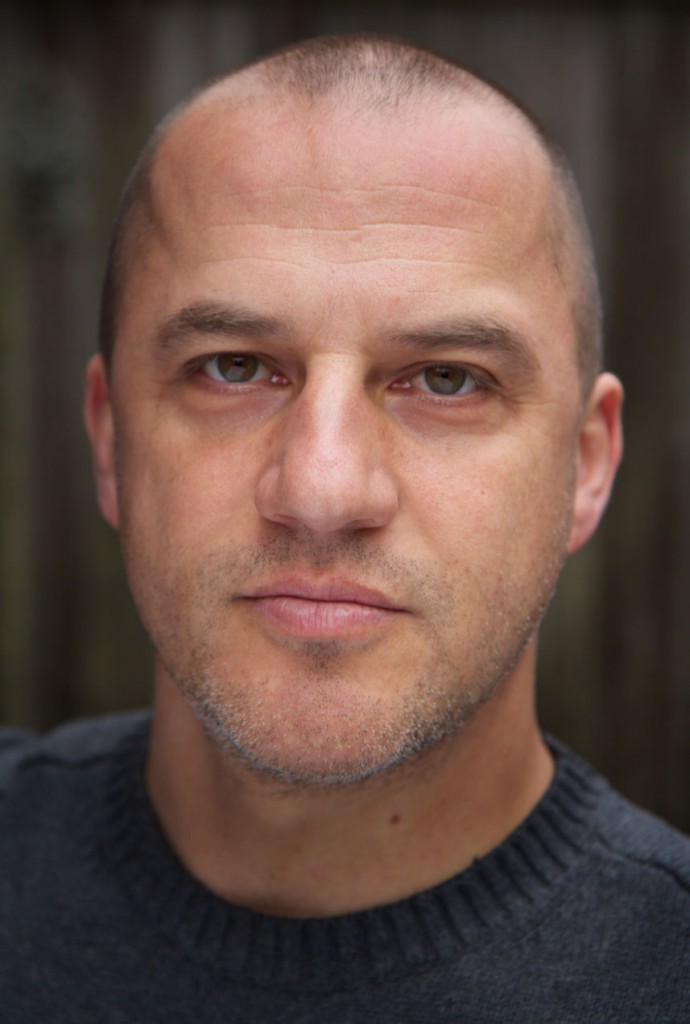Yes, you CAN make a perfectly functional kino-style light with parts you pick up at Home Depot. One that’s flicker-free, looks good, and attaches flexibly and solidly to standard grip heads. It weighs just 4.2 pounds. And you can control the light spill. You won’t get the tough shell and transportability of the Kinos, but if, like me, you’re using the light for a specific job and won’t be using it every day, this is an affordable way to go with little compromise on the quality of the light.
I arrived at this parts list the hard way: by buying the wrong stuff first, learning what works and what doesn’t and why. Here’s what I’ve learned:
T12 tubes are a bad choice. They have what’s called “eratz flicker” unless you buy more expensive ballast. Plus, t12 bulbs are less efficient than the T8 and smaller tubes, so you get less light out of them, even at lower wattages. Instead, get inexpensive T8 fixtures at Home Depot, but not TOO inexpensive. I paid $25 for mine, and it’s great. Just make sure it has electronic high frequency ballast (50/60hz).
None of the tubes on sale at my local Home Depot had a high enough CRI for my purposes, so I called up a local Seattle lighting supplier, Pacific Lighting and Supply, and they hooked me up with to Phillips TL950 full-spectrum lights, which have a whopping 98 CRI, and are balanced at 5000K (a little on the warm side of the ideal 5600K, but close enough for me). The alternative was to purchase lights online but all I could find had minimum order of 4 bulbs, and expensive shipping. So buying local saved me money.
Primary parts:
Lithonia Lighting t8 two-strip fixture: $24.97
Two Phillips TL950 t8 fluorescent tubes: $26.81
Matthews drop ceiling scissor clamp: $8.95
Other stuff you’ll need:
Black wrap (available at filmtools for $23)
3″ gaffer tape (also available at filmtools for $31)
12′ electrical cord with plug (I cut mine off an old Ikea lamp)
2 heavy duty zip ties
To make the mount, I used a Matthews drop ceiling scissor clamp, which I zip-tied around the light using large zip-ties. This works fine in my case because the lamp fixture is extremely lightweight. If I had bought a wider shop light instead, for example, I would have used a stronger and wider Matthews baby plate for the mount. Make sure to get one with a long spud, preferably 6″. To hold everything in place, I gaff taped over that to hold the zip ties from slipping. In fact, I ran gaff tape over the entire light surface – it cuts down on reflections and black looks more professional, of course. The mount works with any c-stand’s gobo head, using a 5/8″ spud.
The fluorescent fixture I bought at Home Depot came ready to be wired, but without a plug. So I cut the cord off an old Ikea light, and wired it up (black to black, white to white – ignore the green if like me you’re wiring to a two-prong plug for maximum socket compatibility on location) using the twist connectors included with the light.
The inexpensive light fixture I purchased had no reflector. That turns out to be a good thing, because I prefer the foldable and shapeable one that I built myself. To do that, I took a 12″ wide strip of black wrap foil, and cut it to match the length of the light, 48.” I gaff taped the edges, which are kind of sharp, which stiffens it some, and gives it more durability. Then I gaff taped the wrap to the top of the light on both sides. Done.
Note, I at first thought I’d use Kino tubes in this light, but discovered that most Kino tubes are designed to be high-output, which means they require more powerful ballast to drive them with the proper color temperature. So buy the cheaper full-spectrum bulbs instead. The best brand for daylight, according to Shane Hurlbut, is Vita-lights.
Note on transport: This light fits perfectly into an inexpensive plastic golf bag case like this one, which I own. It has wheels and is a great way to carry c-stands, glide tracks, tripods and this light safely to location.
